Copyright 2020 - 2021 irantour.tours all right reserved
Designed by Behsazanhost
Old Traditional Doors
Old traditional doors
The beauty of the doors is that they have lived with us every step of the way, they have walked with us hand in hand in our conscious and subconscious life. The doors are as old as the first shelters over time, human beings have paid a lot of attention to the entrance to their homes. They decorated the doors of their houses according to the influence of time and history. So, different styles, colors, and materials have been used over the years. The doors reflect the personality of the owners. They can be big or small; simple or decorated. Nonetheless, no matter how they present themselves, they are a reflection of the world they keep within. They are like the eyes ... the mirror of the soul. They not only represent the social status of their owners but also reflect their beliefs. Greetings and farewells are expressed near the doors. Sometimes they are welcoming and other times they can make us hesitate.
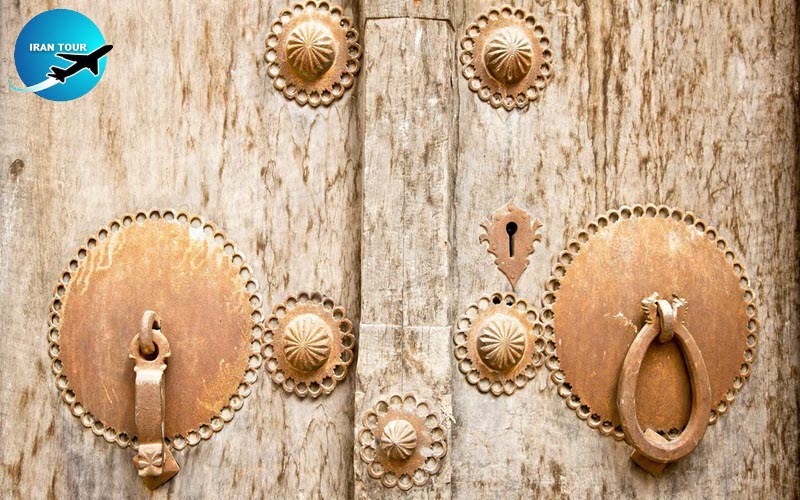 |
Doors played an important role in Persian architecture. Before talking about Persian doors, it seems necessary to take a brief look at Persian architecture. Persian architecture developed as a separate style school during the Achaemenid era and reached its peak with Persepolis, one of the architectural wonders of ancient times. During the Sassanid period, Persian architecture underwent major development in form and technique. Different methods of construction construction developed, which influenced the architecture of the centuries to come. This served as the basis on which the remarkable Islamic architecture of Persia flourished. The glorious architecture of Iran has consistently shone among the other architectural landmarks of the world, occupying a worthy place in the art world. Returning to the doors, we see that they vary in size and style depending on the function and importance of the building and the location of the entrance in relation to the total composition. Doors also play a role in providing light, ventilation, and natural views to the exterior of an enclosed space. Therefore, doors play an important role in the decoration of buildings as well as in their protection. We can divide the doors into two main categories: A: From Antiquity to the Safavid period: During this period, the doors were generally made of wood. Either large pieces of wood were used or small pieces were put together. In both techniques, decoration played an important role.
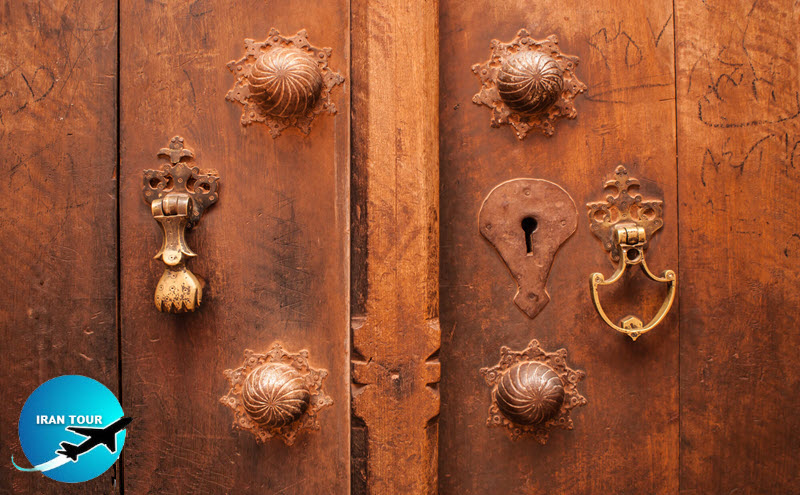 |
1- The assembled wooden doors were generally more elaborate and were sometimes inlaid with ivory and other precious materials and framed with bronze fittings inlaid with silver or gold. The middle panel was often larger than the top and bottom panels. The upper panels were inscribed and the lower ones contained geometric medallions. The stunning curvature of the center panels was filled with flower and leaf shapes. This wood carving technique is called Monnabat, which refers to protruding designs of plants, flowers, etc. on wood. The word Monnabat comes from "Nabat" which means plant.
It was commonly used when the artist carved the patterns of various plants, trees, and flowers on rock or wood. Therefore, Monnabat is one of the oldest art forms. The oldest extant work of Monnabat is a wooden door belonging to the Atiq Mosque of Shiraz (late 11th century AD) during the time of Amir Saffari. In the National Museum of Iran, there are several old wooden doors belonging to the 11th and 12th centuries AD, which have very beautiful carvings in the form of leaves, branches, and flowers.
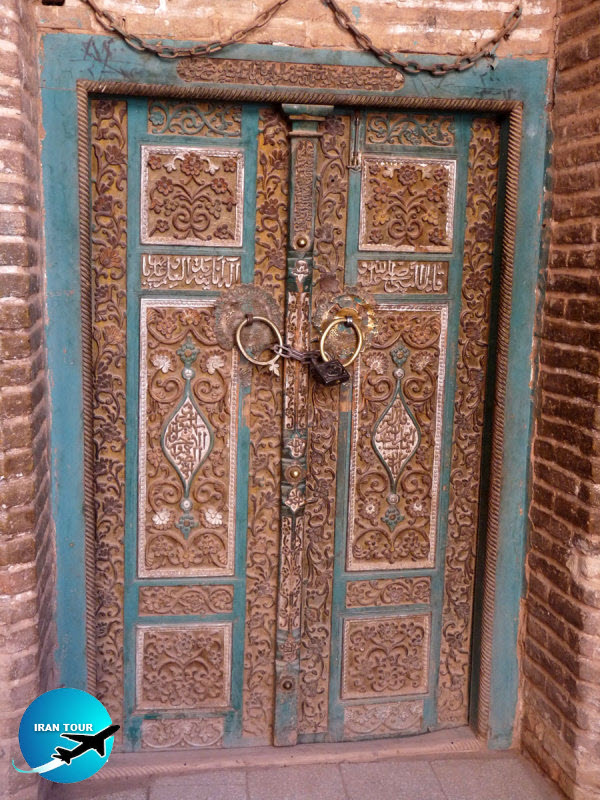 |
2- The inlay of wooden doors is called "Monabat-Moarragh. In this technique, precious woods, shells, ivory, bones, copper, silver, and gold have been used. used in the heart of ordinary wood, and the artist created fantastic and elegant designs. The art of Monnabat has its roots in tiling work, which has a longer history. The art of Monnabat reached its highest point peak of development during the 16th and 17th centuries.
3- Carving the pattern on wood with other materials on the wood surface is another technique and is called “Khatam-Monnabat.” This type of art seems to be arrived in Iran during Mongol rule and through direct contact with China.
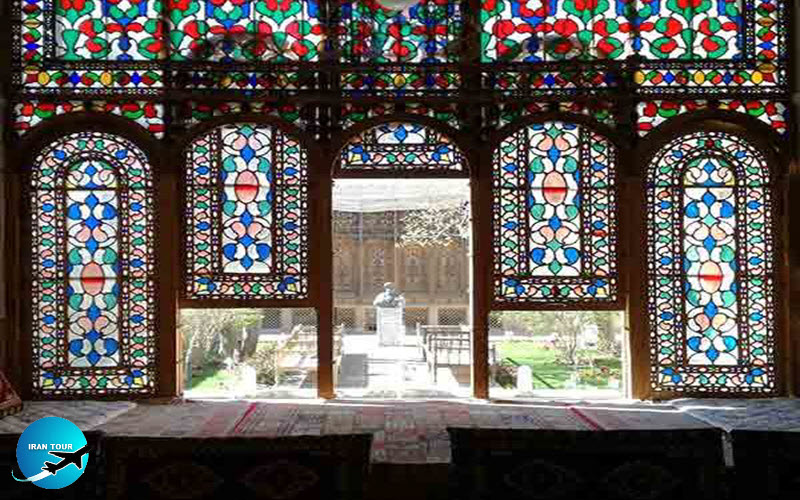 |
4- Since people sat on the floor for meals and socializing, in order to be able to look at the view outside, their perspective was from the ground, and for this reason, they used the Orsi, which was a door window a door frame with two parts) a stab the and a mobile. The stable part functioned as a dividing element like a wall, and the movable section was for a better view of the outside and ventilation.
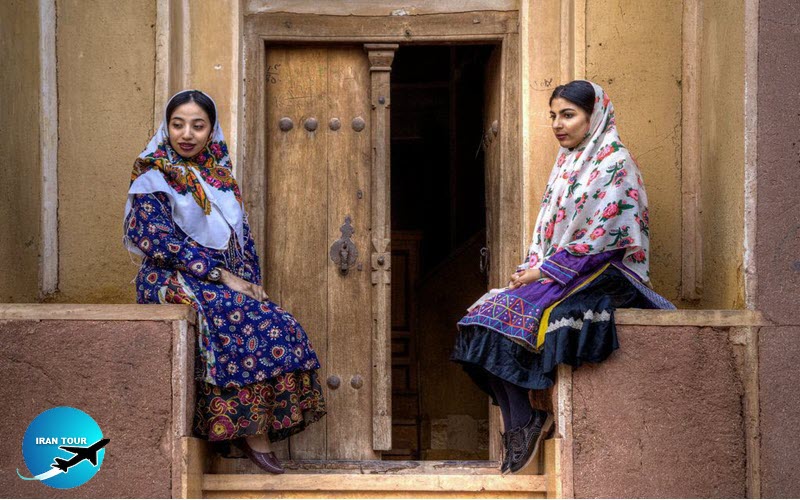 |
The same arrangement of the three rectangular wooden panels continued on the doors in the Safavid era, but the technique of decoration has changed. The surface was painted gold and then coated with varnish. The figures are the main decoration of the panels. Red, blue, green, and other colors were used to give it a contrast with the golden streak in the dark background of the surrounding area. B: Qajar and Pahlavi Period During the Qajar era, the design and construction methods of the gates continued to be those of previous periods. The doors were made of mulberry wood and also maple, alder, elm, and walnut. The simpler doors were decorated with rows of metal bosses, bands, and knockers. Double-row inlaid bosses on the top and bottom of the doors served to prevent the wood panels from cracking. Door knockers were often signed by blacksmiths. On the left outer wing of the door either a traditional narrow metal strip was attached directly or by means of a chain, and on the right-wing a metal half loop was attached in the same way. This made it possible to let the host know who is knocking. The left metal band was for the male and the half buckle for the female visitors. The doors of palaces and mosques were more elaborately decorated. They were carved, inlaid, or plated with engraved metal panels or sheets of precious metal. The doors of the houses were made in similar shapes and materials but on a scale close to the average height of a man. The degree of sophistication and decoration depended on the social status and wealth of the owner. In some regions, the decoration of the doors reflected specific foreign influences. The designs of the late Qajar and Pahlavi wood doors also reflect European prototypes of the design. During the same period, the trend became to paint the doors in matt colors, whereas previously they had been left in their natural wood colors and maintained by annual polishing with vegetable oils. Towards the end of Pahlavi's reign, European art-nouveau and art-deco styles were adopted for doors in Iran. There was also a tendency during the Pahlavis to revive historical styles especially from the Achaemenian Sassanid and Safavid periods.
- Details
- Category: IRAN Blog